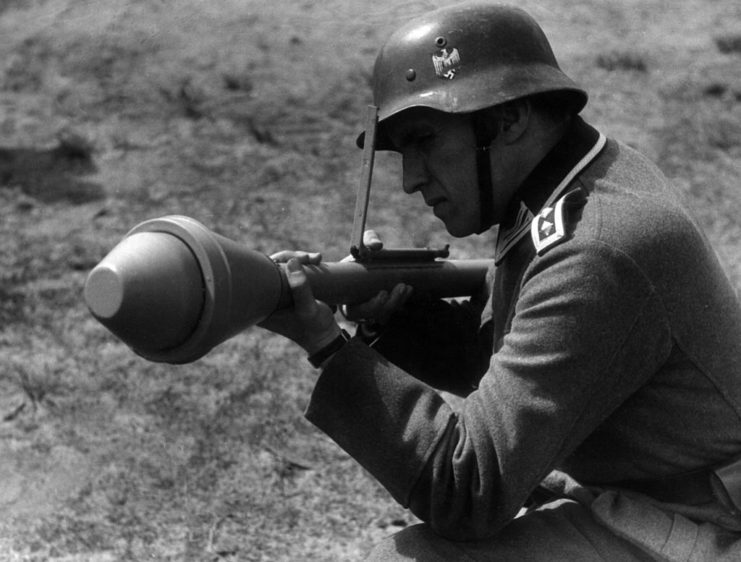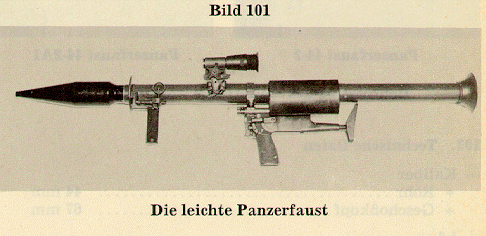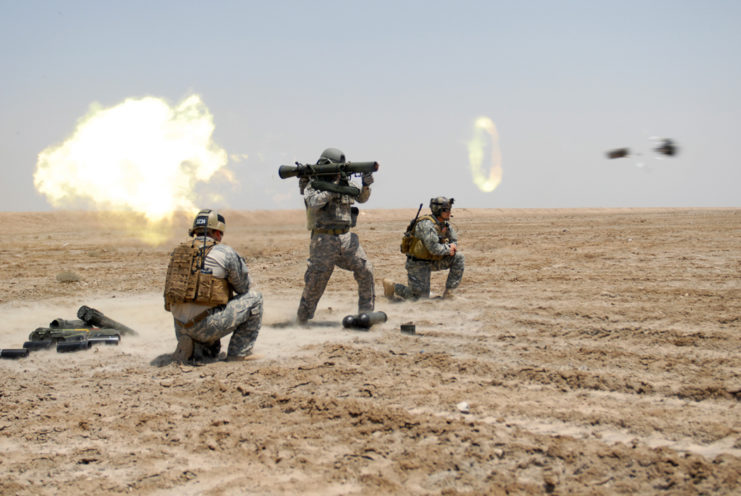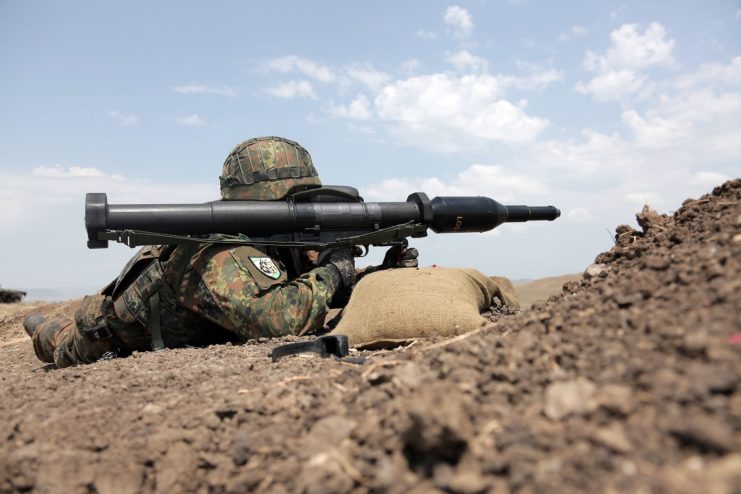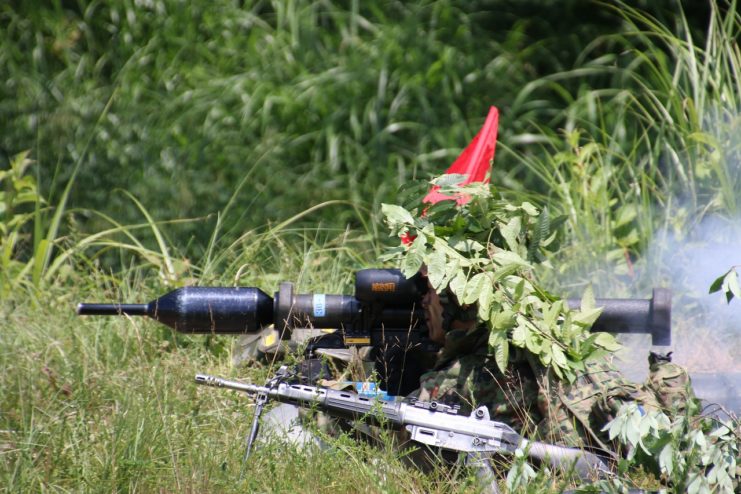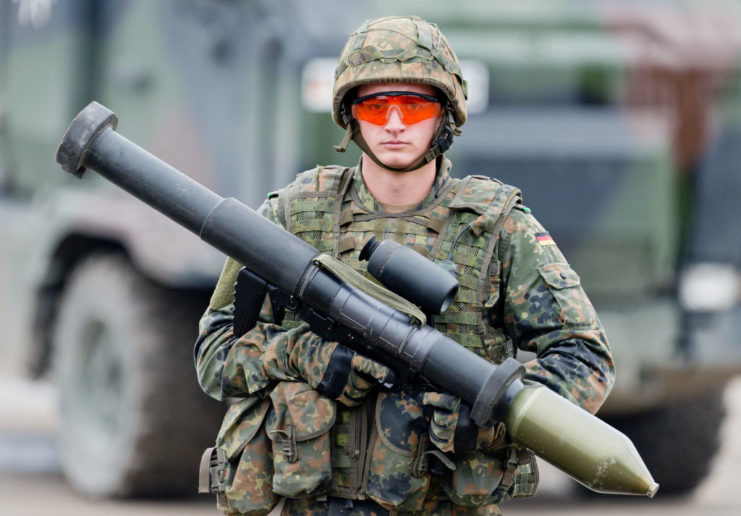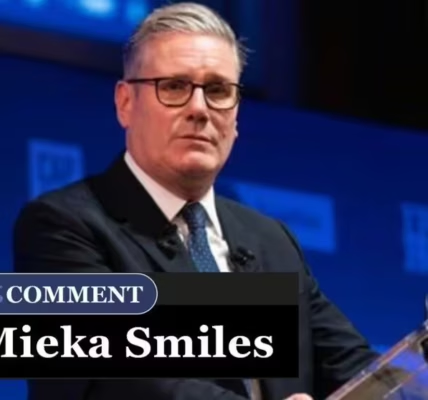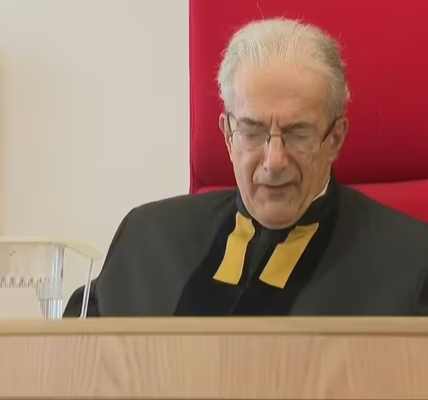The lightweight and portable Panzerfaust 3 recently made headlines due to its use in the ongoing conflict between Russia and Ukraine. A newer version of the World War II Panzerfaust, it allows soldiers to penetrate all types of tank armor thanks to its shaped-charge warheads.
The use of Panzerfausts in World War II
During World War II, the German army fielded the Panzerfaust, a disposable, pre-loaded anti-tank (HEAT) launcher. Its small size and lack of recoil allowed it to be deployed by a single infantryman.
The Panzerfaust was introduced in 1943. It was relatively inexpensive to produce and quite effective. It could penetrate armor up to 20 centimeters thick. However, it lacked a long range, making it more suitable for urban warfare than front-line operations.
By the end of the war, around 6.7 million units had been produced.
The development of a new weapon in West Germany
With the founding of the Bundeswehr in 1956, all troops were tasked with “fighting armored vehicles and tanks.” For this purpose, they were equipped with the 44 mm light Panzerfaust (PzF) lance launcher and the 84 mm Carl Gustaf recoilless rifle.
The PzF 44 was a recoilless, shoulder-fired anti-tank rocket launcher, while the Carl Gustaf 84 mm was an anti-tank weapon. Although they were the first choice due to their portability, both had their weaknesses. The PzF 44 was outdated, and the Carl Gustaf 84 mm was too heavy for effective use.
Calls for more effective weapons first emerged in 1973, when combat vehicles were equipped with reactive and active armor. Warsaw Pact member states knew they needed to develop more effective technologies that could not only penetrate these new armor types but also be effective at long ranges.
In 1978, Dynamit Nobel AG began designing and developing the weapon later known as the Panzerfaust (PzF) 3. The first test took place in 1986.
Panzerfaust 3 specifications
The Panzerfaust 3 is characterized by its compact and lightweight design, allowing it to be operated by a single infantryman. Its ergonomics follow a set standard, and the controls, including the pistol grip, are designed for easy operation from all positions.
The PzF 3 features a disposable container with a 110 mm HEAT warhead – the DM12 or DM12A1. It is based on the shaped charge principle and the rapid reaction of the impact fuse, so that the impact velocity does not minimize the effect on the target. The warhead is also equipped with a safety mechanism that activates after a flight time of five meters and detonates upon impact or when the propellant is exhausted.
The original PzF 3 had a combat range of 15 to 300 meters against moving targets and between 400 and 600 meters against stationary targets. Because it produced no significant recoil, it could be fired from close quarters. This was thanks to the plastic pellets filling its rear, which minimized recoil through the so-called recoilless counterweight principle .
Although the PzF 3 was a further development of the PzF 44 and the Carl Gustaf 84 mm, it also had its weaknesses. Infantrymen criticized its unwieldiness and the risk of jamming. It could only fire one shot and was ineffective against heavy and new armor variants.
Variants with increased range and destruction
Numerous variants of the Panzerfaust 3 were produced over the decades. The first was the PzF 3-T. Developed in the late 1990s, it represented a significant improvement over the original. It introduced the 3-T Tandem-HEAT warhead with a double shaped charge, which contained an explosive charge in its spike. This charge penetrated explosive reactive armor (ERA), allowing a second warhead to damage a tank’s primary armor.
As with the original PzF 3, its effectiveness was greatest against moving targets at 300 meters and against stationary targets at 400 meters.
The PzF 3-T was followed by other variants. Among the most effective were the PzF 3-T600 and the PzF 3-IT, which could defeat even heavily armored tanks with ERA. The latest variant, the PzF 3-IT600, can fly up to 600 meters thanks to its Dynarange fire control system, which aids targeting and aiming.
Other notable variants include the PzF 3LR, with a range of 800 meters and the ability to penetrate 700 mm of armor, and the Bunkerfaust, an anti-structure version for urban warfare. It uses a 106 mm tandem high-explosive dual-purpose (HEDP) rocket capable of penetrating buildings, field fortifications, bunkers, and pillboxes.
The Panzerfaust 3 in action
The Panzerfaust 3 entered service with the Bundeswehr in 1987. However, the German army did not officially adopt the weapon until 1992. In 1989, Japan became the first international customer, followed two years later by Switzerland.
Today, the PzF 3 is used by at least eleven countries, including South Korea, Peru, Austria, Iraq, the Netherlands, Germany, Belgium, Italy, and Mauritius. US special forces tested the weapon but decided against its use.
After its development during the Cold War, the PzF 3 remained in service and was used in the Iraqi Civil War, the Afghanistan War, the Syrian Civil War, and most recently in the Russo-Ukrainian War. Starting in 2022, the German government authorized the Netherlands to supply the weapon to the Ukrainian military.



